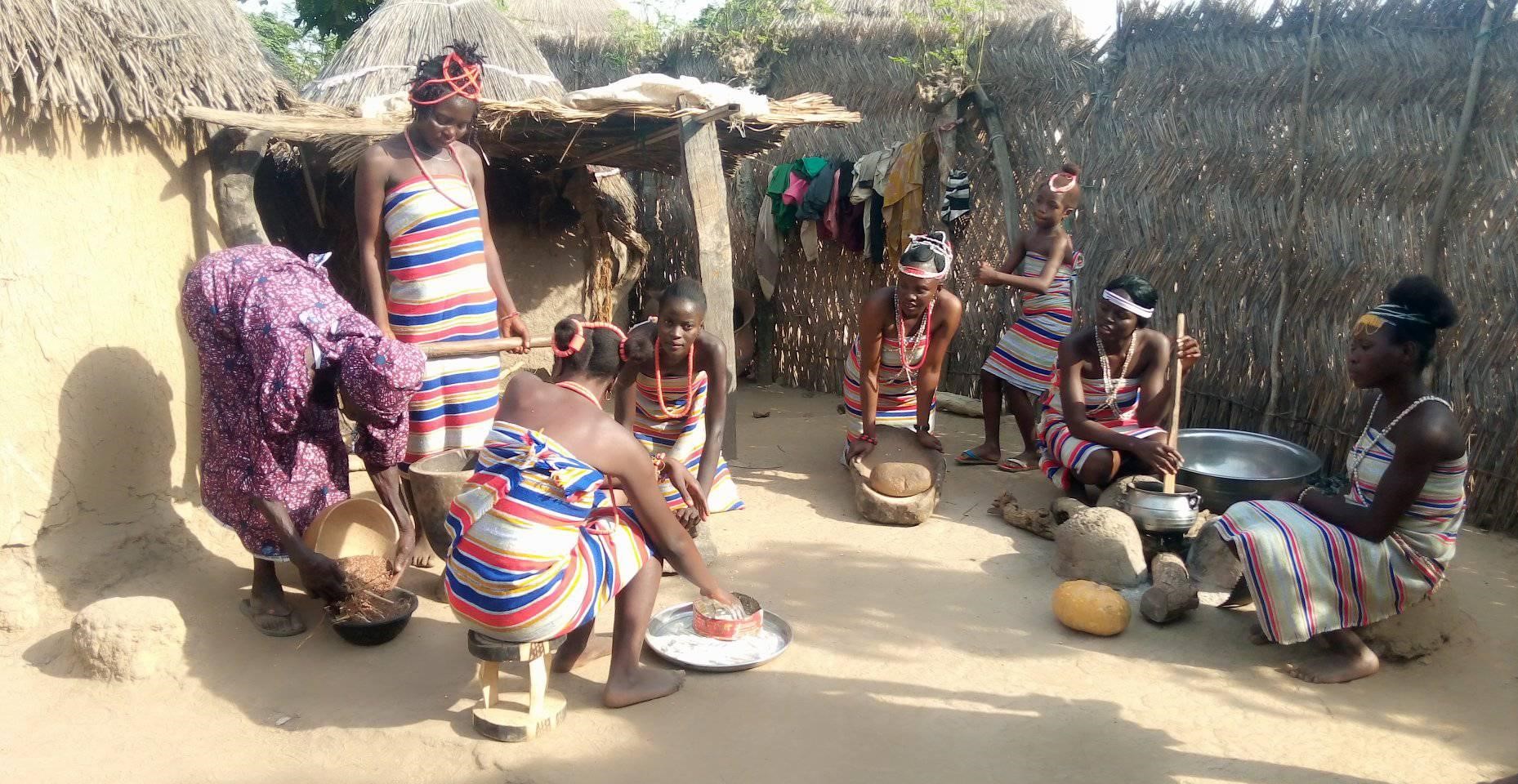Documentation and Description of the Dza Language

Dza Maidens. Photo of Iyeh Jonah, Freedah Betty Boniface, Zumunchi David, Prosperity Philemon, Magdaline Wilberforce, Miracle Malachi, Maryam Yusuf and Favour Abel by Venerable Joshua, 2022. Click on image to access collection.
| Language | Dza |
| Depositor | Nlabephee Kefas Othaniel |
| Affiliation | LLACAN |
| Location | Nigeria |
| Collection ID | 0670 |
| Grant ID | IGS0386 |
| Funding Body | ELDP |
| Collection Status | Collection online |
| Landing page handle | http://hdl.handle.net/2196/42673786-7426-5d7d-ab55-1150434g15d3 |
Summary of the collection
This project is titled “Documentation and Description of the Dza Language”. The documentation activities took place in Dza, a community located on the upper bank of the river Benue in North – East Nigeria. The project is funded by ELDP from September 2022 to August 2025. The outcome of the project is a video and audio corpus of naturalistic and elicited data of various genres. The project organized and documented the construction of a Dza traditional hut. Such huts are no longer built. The project also produced two bilingual dictionaries and a grammar sketch of the Dza language.
Group represented
The ethnic group represented in this deposit call themselves “E Idza” while neighboring communities call them Jenjo, a name given to them by Fulani speakers which mean the people of Jen. Jen or Jang itself is a corrupt pronunciation of the name of their land, Dza [d͡zə̀]. The Dza people are concentrated around the town of Jen on the upper bank of the river Benue, at the border between Adamawa and Taraba state. The people identify themselves according to the three regions of Dzaː Nwabang, Dzakah and Ye. The three regions speak different dialects of the language, but this dialectal variation is fast disappearing. The young generation of adults now speaks a kind of merged form of the language. This documentation project covered all the three regions of Dza, and the documentation was predominantly carried out in Jen town.
Special characteristics
This project is one of the few documentation projects carried out by members of the target community themselves. I am Dza ethnically myself through my father. In this project, I collaborated with fellow speakers of the language across the three regions of Dza. The project will document an endangered construction technique local to the Dza people. The type of hut constructed is one of the Dza cultural boundaries identified by Charles K. Meek, a British anthropologist, in his book on the tribal studies of Northern Nigeria. The huts are no longer constructed in the community, but we will organize the construction of one for the purpose of this documentation. After the construction is finished, we will hand it over to the Dza community as a cultural site. We will published two bilingual dictionaries in print and we will also develop a Dza dictionary app. These will be handed to the Dza people for use in the community.
Dza belongs to a cluster of ten languages known as the Bikwin – Jen. The Bikwin – Jen languages are part of a number of small and underdescribed linguistic groups given the cover term “Adamawa”, whose affiliation to the Niger-Congo phylum is generally beyond doubt but whose exact position within this phylum remains unclear. We believe this collection will contribute fresh data to the ongoing linguistic studies for the internal reconstruction of the “Adamawa” languages.
Collection contents
This project aims to produce a corpus that contains 35 hours of video and parallel audio recordings of naturalistic data, and 15 hours of elicited materials.The contents of the naturalistic data include:
– Social events such as: wedding, communal farm-work, games and traditional festivities
– Demonstration of local techniques such as weaving mats, building physical constructions, cooking, traditional medicine and wood carving
– Others include: life stories, community histories, everyday conversations, speech plays such as jokes and riddles
The collection shall also contain:
– ELAN files of 15 hours of transcribed and translated texts
– FLEx files of 5 hours fully glossed texts
– 2 bilingual dictionaries of Dza – English and Dza – Hausa and
– A grammar sketch of Dza
Acknowledgement and citation
The users of this corpus should acknowledge the principal investigator, Nlabephee Kefas Othaniel and the members of the research team, Hammanson Sule and Akunfi Balanku. For the use of any part of the corpus, please acknowledge by name the person(s) whose picture and/or voice are used and the person(s) who did the recording, and/or transcription and translation. All relevant information on the people involved in a session is found in the accompanying meta data of that session. The Endangered Languages Documentation Programme should be acknowledged as the funder of the project.
To refer to any data from the collection, please cite as follows:
Othaniel, Nlabephee Kefas. 2022. Documentation and Description of the Dza Language. Endangered Languages Archive. Handle: http://hdl.handle.net/2196/52774796-8436-6d8d-bb65-2160535g25e3. Accessed on [insert date here].


